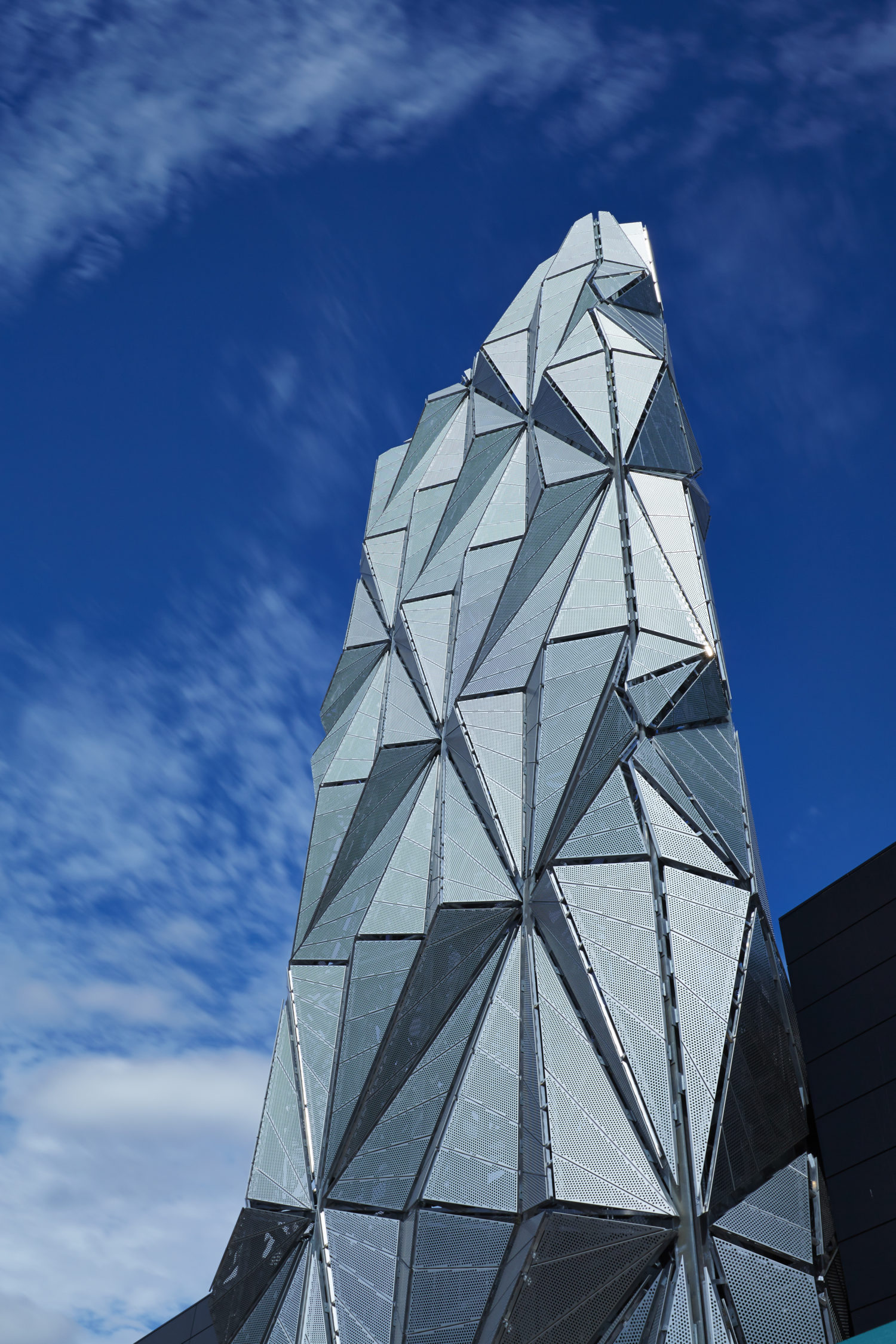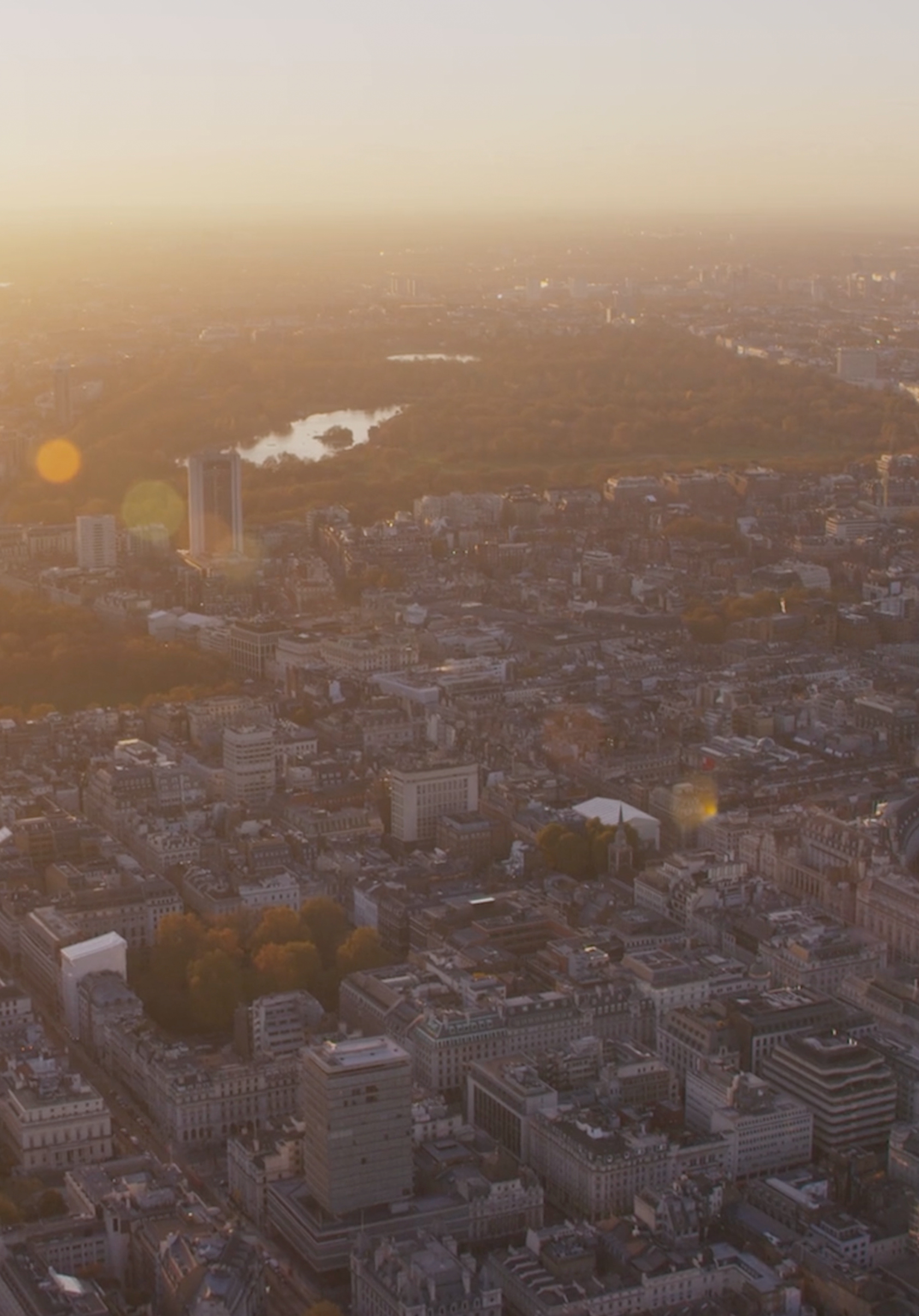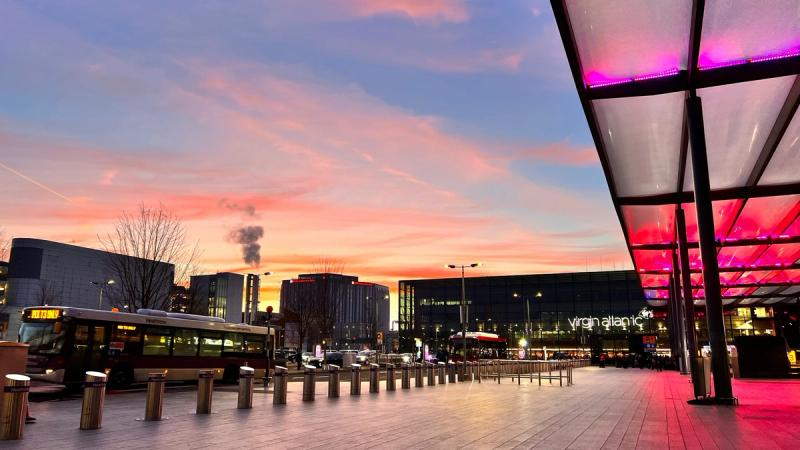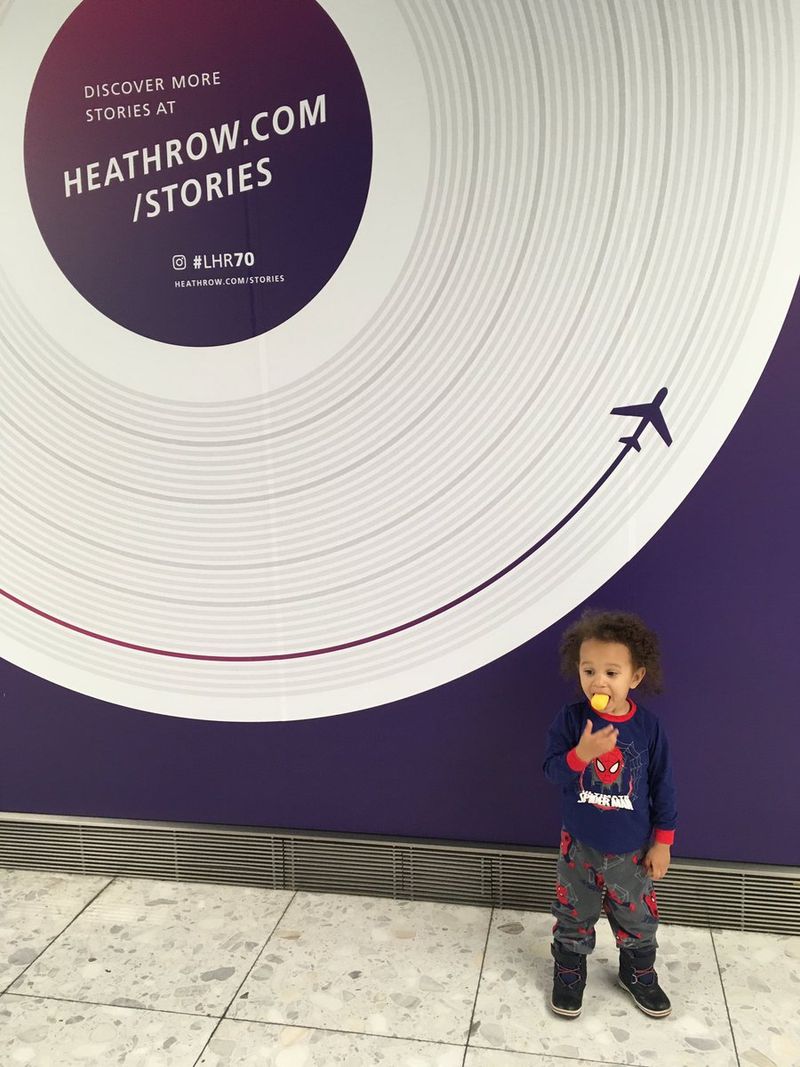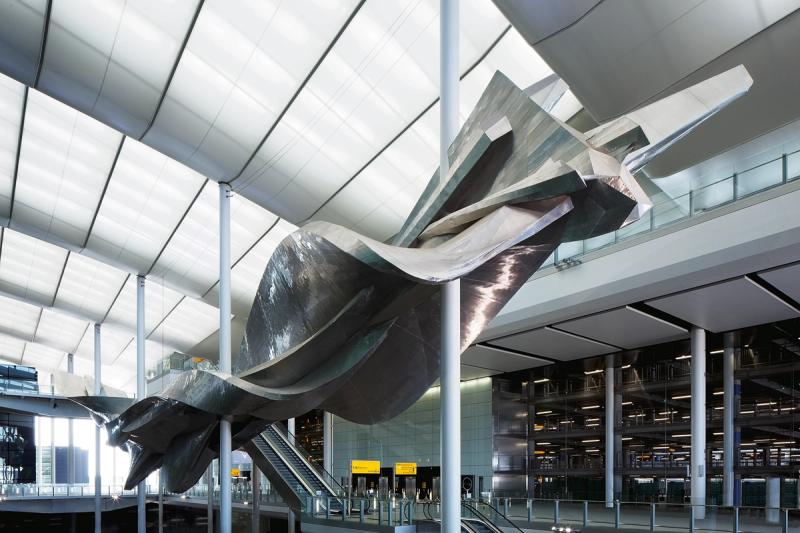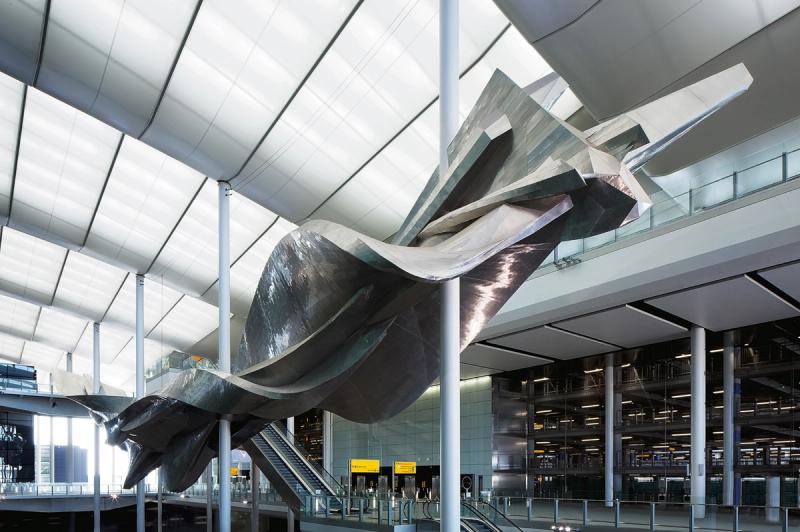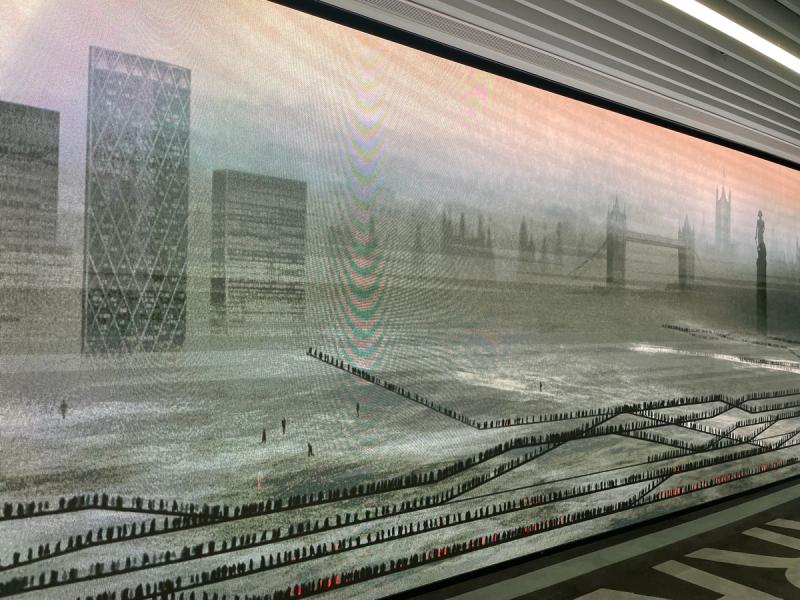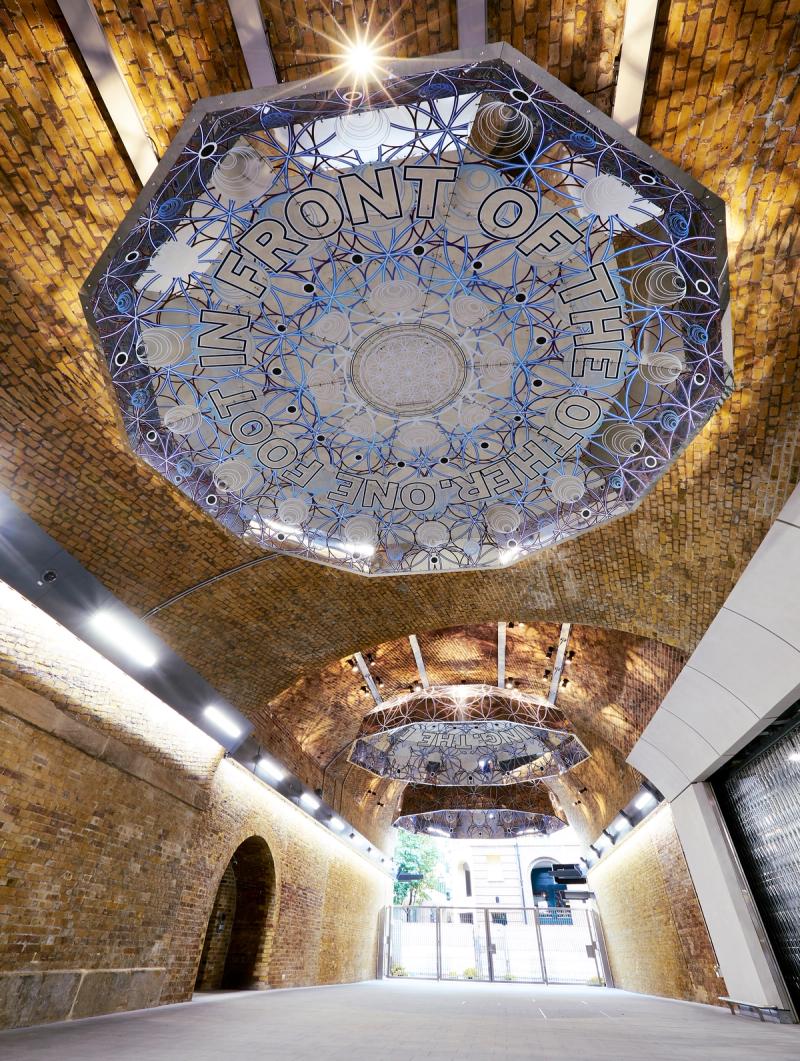In 2010, Futurecity developed a cultural strategy positioning Heathrow as a cultural gateway to London. At the heart of this vision was a proposal for a landmark public artwork within Terminal 2’s covered court, an expansive space comparable in scale to the Turbine Hall at Tate Modern.
Following an international competition, British sculptor Richard Wilson RA was commissioned to create Slipstream, a 78-metre sculpture inspired by the imagined flight path of an aerobatic aircraft, the Edge 540. Using advanced computer modelling, Wilson translated the physical motion of the aircraft into a sweeping aluminium form, which weaves through four structural columns beneath the undulating roof of Terminal 2. The work captures the drama and dynamism of flight and has become a defining feature of the terminal’s identity.
In 2015, Futurecity was invited to build on this cultural vision through a project that explored the relationship between storytelling and the Heathrow brand. The Heathrow Story Project collected thousands of first-hand accounts from passengers and staff using SenseMaker®, a real-time data visualisation tool developed with Cognitive Edge and Storythings.
The project revealed previously untold narratives and emotional connections within the airport environment. Staff across multiple departments were trained as story-gatherers, embedding storytelling into everyday operations and highlighting the human experience behind one of the world’s busiest airports. Together, these projects reflect Heathrow’s ambition to enrich passenger experience and embed culture and creativity within its brand identity and spaces.
